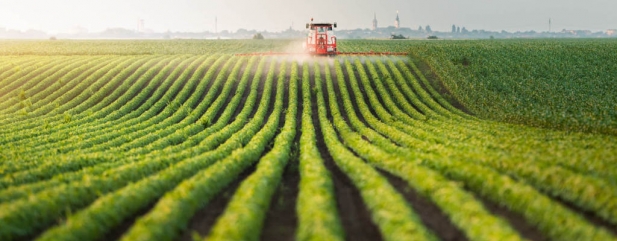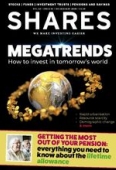Archived article
Please note that tax, investment, pension and ISA rules can change and the information and any views contained in this article may now be inaccurate.
New fund offers way to invest in global farmland

February 2020 should see the stock market debut of the UK’s first fund dedicated to agricultural assets around the world.
The Global Sustainable Farmland Income Trust aims to raise up to $300m to buy and lease farmland in the US, Europe, Australia, New Zealand and Latin America.

While investing in farmland is an established market in other parts of the world, the lack of available land to buy in the UK – where only 0.5% of farming assets change hands every year – has kept it out of the public eye and away from public exchanges, until now.
Depth of experience
The managers of Global Sustainable Farmland Income Trust have several decades of experience of buying and leasing farming assets as well as insight into the latest agricultural technology or ‘agri-tech’ in order to manage the assets.
Farmland is traditionally family-owned, but there has always been strong demand for ‘uncorrelated’ assets like agricultural land from wealthy family offices, pension funds and sovereign wealth funds. Uncorrelated assets are those that do not perform in line with stock or bond markets (see here for our feature on alternative assets).
The investment trust will focus on buying farms valued at between $10m and $50m. The market for agricultural land below $10m tends to be driven by families wanting to expand their own holdings, meaning there is often stiff competition to buy, while the market for farming assets above $50m is led by big investors like pension funds with deep pockets.
Rising yield and asset values
The fund managers of Global Sustainable Farmland Income Trust will concentrate on ‘best-in-class’ assets and work with ‘best-in-class’ farm managers who will run the day-to-day operations. The trust itself will take income in the form of base rents, which will increase annually on a fixed or index-linked basis and be passed on to shareholders as quarterly dividends.
The aim is to generate an initial dividend yield of 2.5% a year rising to 4.25% a year once all of the proceeds from the listing are deployed. In addition the trust may pay a special dividend from time to time linked to any crop-share income that it has received during the year.
Over the long term, total returns including increases in land values are expected to be in the range of 7% to 8%. However the trust will not buy farmland which is not productive just on the off-chance that it will gain in value.
Sustainability is high on the agenda
As Sven Miserey, co-manager of the fund explains, all of the farms acquired will already be producing crops and will be fully let by the time they are acquired.

The majority will produce annual crops like fruit and vegetables while other land will be planted with trees or vines which do not need annual replanting.
The trust will deliberately avoid ‘commoditised’ land used for growing wheat or cereal crops where competition is high and prices tend to be low.
The farms will be run under the LEAF (Linking Environment and Farming) ‘Integrated Farm Management’ system or using equivalent sustainable farming aims and will be independently reviewed each year to ensure they ‘reflect best practice and concern for the environment’.
This is not merely a nod to a the fashionable sustainability theme. If managers don’t look after the top-soil using sustainable methods, the farmland won’t be able to produce crops reliably in the future and its value as an asset will diminish.
Meanwhile some of the target assets offer the potential to increase their value through better irrigation, planting new and higher-value crops or using new technologies to increase yields while still conforming to sustainability standards.
Diversification is also key
The trust aims to spread its investments geographically and by crop type so that it reduces the risk of major weather events affecting production.

As the majority of the assets are expected to be overseas, the trust will be priced in US dollars. Up to 75% of assets may be invested in the US, while up to 50% may be invested in Europe. The maximum UK exposure is set at 20%, although in reality it is likely to be significantly lower due to the lack of good land at reasonable prices.
The trust has already identified a pipeline of roughly $1bn of assets which meet its criteria and expects to have invested most of the net proceeds of the flotation within 18 months. It aims to join the UK stock market on 28 February.
Risk factors to consider
The investment trust structure, with a fixed number of shares, suits the farmland space better than mutual funds as assets do not need to be sold to meet redemptions when investors want to withdraw their money. However, there are still risks associated with investing in farmland.
While the trust is designed to be diversified by geography and by crop type, there is still a risk that climate change brings more severe weather and more frequent storms, damaging crop production.
There is also a risk that the tenants, who manage the farms, are unsuccessful in growing crops and don’t cover their base rent. In that event the trust has a claim on the managers’ other assets, but failing all else the land could be turned over to solar or wind energy to maximise returns.
Important information:
These articles are provided by Shares magazine which is published by AJ Bell Media, a part of AJ Bell. Shares is not written by AJ Bell.
Shares is provided for your general information and use and is not a personal recommendation to invest. It is not intended to be relied upon by you in making or not making any investment decisions. The investments referred to in these articles will not be suitable for all investors. If in doubt please seek appropriate independent financial advice.
Investors acting on the information in these articles do so at their own risk and AJ Bell Media and its staff do not accept liability for losses suffered by investors as a result of their investment decisions.

 magazine
magazine








